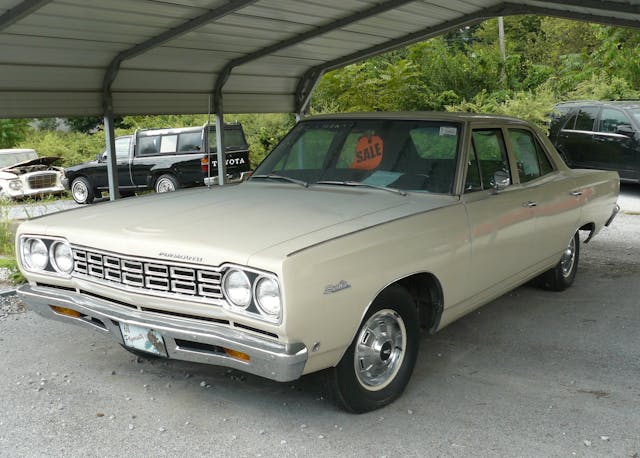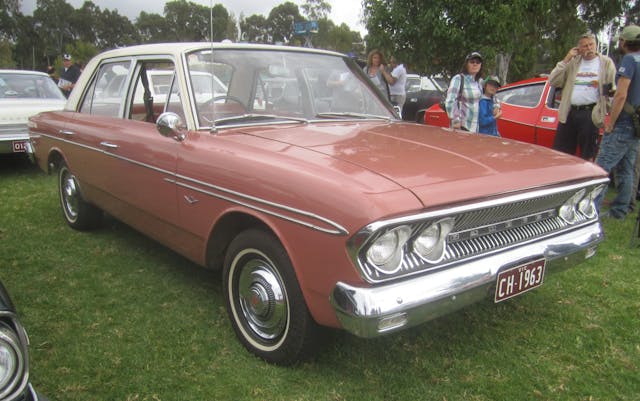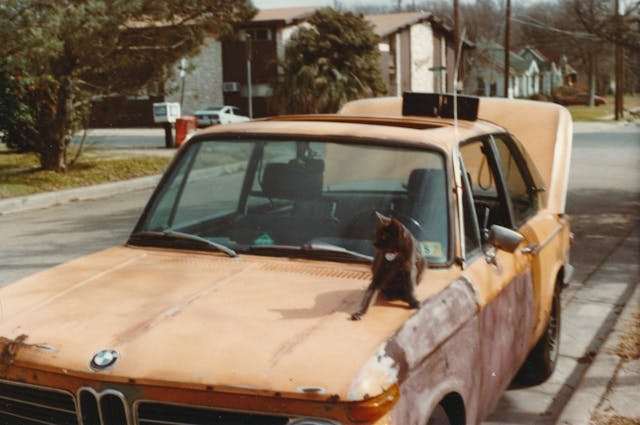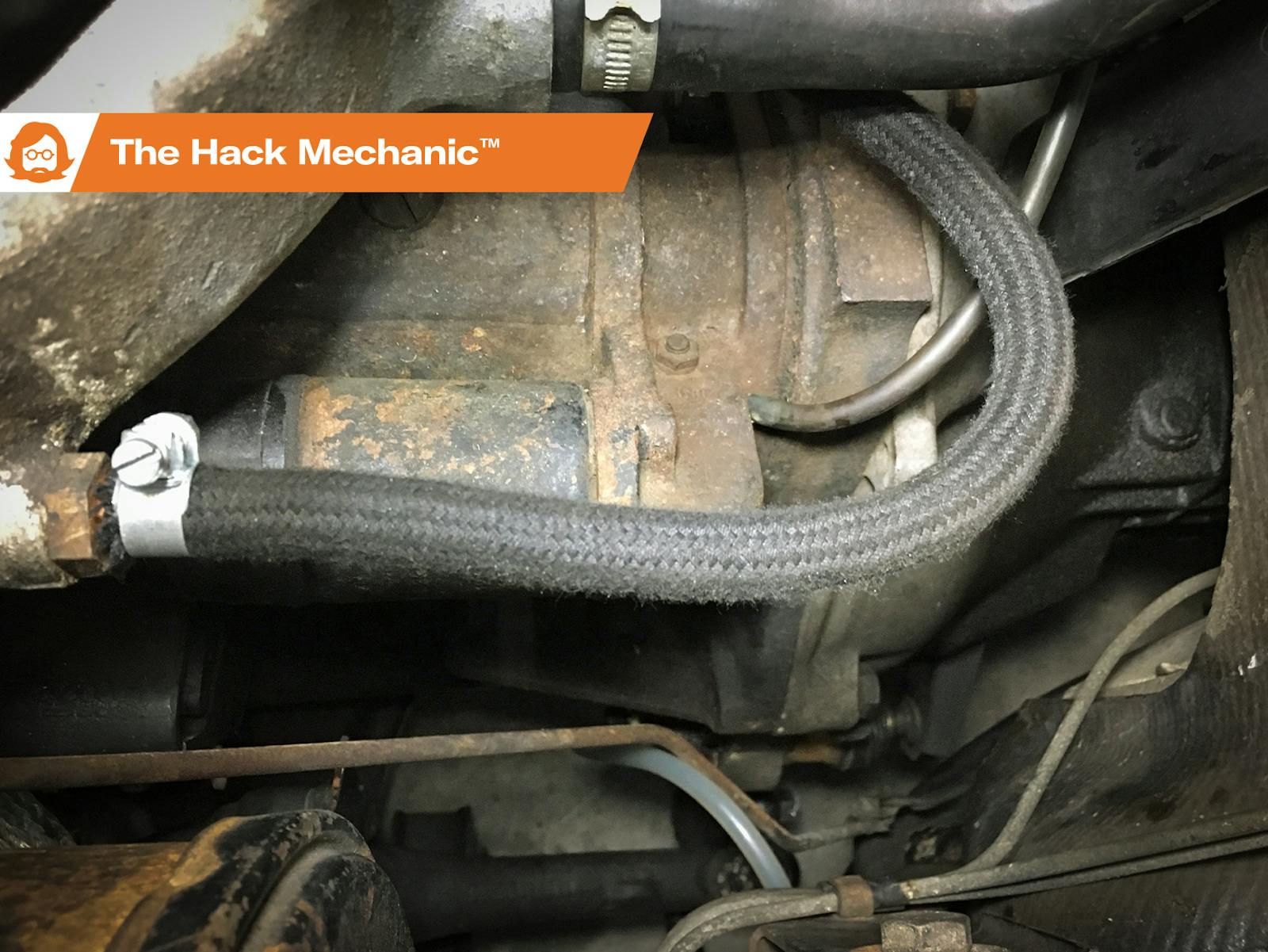The first 6 cars I enjoyed from behind the wheel

Between the 60 or so BMWs, six Vanagons, six Suburbans, and various and sundry family cars, about 100 vehicles have come into my possession (and usually left) since I got my driver’s license in the mid-1970s. I’ve written stories about the best and worst of the bunch, but I thought I’d simply enumerate the first six, as after that, it becomes something of a blur.
The first six weren’t great—in fact, several were bloody awful—but they were all memorable.
1969 Plymouth Satellite

This was my mother’s car. These B-bodied Chryslers with the slotted front grilles were best known in their two-door, 383-cubic-inch Roadrunner form, but ours was the sensible four-door with the stalwart 318 engine. Though the Satellite was classified as “mid-sized,” it was enormous by modern standards, sort of like a bigger pumped-up Dodge Dart with a V-8. With its four doors and front bench seat, it seemed to swallow an endless number of adolescents; I remember my mother driving me and 10 of my friends home after a junior high school dance (ah, those were the days when you could ignore seat belts and not feel like a criminal). Everyone in my family has a special place in their heart for this car. It was the first car my mother bought by herself after my father passed away, and she took particular pride in having negotiated a better deal than a family friend who independently sought to grease the skids on her behalf. It took the family on innumerable trips back and forth between our old haunts on Long Island and our new digs in western Massachusetts. And it was the car that my sister and I both learned to drive on. Sadly, images of the car only exist in our memories.
1974 Fiat 128 Sedan

When the Satellite’s 100,000 miles qualified it for membership in the repair-of-the-week club, it began rusting away, and the first Arab oil embargo caused fuel prices to spike, the trifecta of events caused my mother to sell it and buy a white 1974 Fiat 128 two-door sedan. I begged her to buy a BMW 2002 instead, as I’d seriously imprinted on one owned by a college student who lived with us for one summer a few years prior, but the cost difference was too big. Although Fiat was front-wheel drive instead of RWD like the 2002, it was a similar size and weight, and it had a four-speed stick. My mother, who drove the family’s ’63 three-on-the-tree Fairlane before the Satellite, picked up the stick immediately, and taught me. The Satellite may have been the car I learned to drive on, but the Fiat 128 was the family car when I got my license. I treated it as if it was a BMW 2002, which is to say that I pretended I was Nikki Lauda and beat the crap out of it. It was a fun, nimble little car, even if it did live up to its “Fix It Again Tony” reputation. These 128 two-door sedans, particularly in the U.S.-spec big-bumpered configuration, definitely aren’t one of Fiat’s set-your-heart-aflutter designs, but I enjoyed ours after I got my license. Like the Satellite, I can’t find a single family photo of the car.
1970 Triumph GT6+

As I wrote several years back, the first car I owned outright was a 1970 Triumph GT6+, the car that taught me that everything bad you’ve ever heard about British cars is true—the electrical problems, the rust, the metal fatigue, all of it. And, to make it worse, the GT6 had a dual affliction. First, the car was basically a Spitfire with a hatchback and a de-stroked six-cylinder TR6 motor, so everything behind the engine would break from the additional torque. Second, the weight distribution and the rear suspension design resulted in handling characteristics that would make the car swap ends on a moist road if you so much as coughed. But it was girl-magnet cute and could eat a BMW 2002’s lunch in second gear, so I loved it, even though it ran perhaps half the time during the 2.5 years I owned it. The repair costs ate me alive while I was a poor college student, and the car rusted while I watched, so I sold it while it still had some value. The secret is out that GT6s look like little E-Type Jaguars, so the days of being able to find solid cars for short money are pretty much gone, but I still reflexively type “GT6” into Craigslist and Facebook Marketplace. Who knows? There may come a day when my Lotus Europa doesn’t give me enough pain and I seek to relive those glorious times when shifting and nailing the gas posed the real risk of creating expensive metallic banging sounds and stranding you until the tow truck arrived.
1963 Rambler Classic

After I sold the GT6, I was without a car for my last two years of college. Then my best friend and housemate got married, I was the best man at his wedding, his parents bought him and his wife a new VW Rabbit, and as a groom-to-best-man gift, he sold me his and his fiancé’s current car—a 1963 Rambler Classic 660—for a dollar. I still have the bill of sale. Note that this wasn’t the weird frumpy-looking Rambler American. The Rambler Classic and its upmarket sibling the Ambassador were a fresh new design that won Motor Trend’s Car of the Year award for 1963, and ’63 Classics / Ambassadors are unique in their one-year-only electric razor-style front grille. The 660 trim level was pretty basic—straight six, power nothing—but after the drama of the Triumph GT6, I warmed to the Rambler. When my then-girlfriend’s job at Harvard moved to the University of Texas in Austin and we planned to move there, I struggled with whether or not to take the Rambler, but it relieved me of the decision by overheating on a final drive out to Amherst. I left it by the side of the road, something I’ve always felt badly about. I keep my eye out for a fully loaded Ambassador with two-tone paint, V-8, factory air, and power everything.
1971 Volkswagen Bus / 1969 Westfalia Camper

When I was still living in Amherst in 1981, attending graduate school at UMass, my then-girlfriend Maire Anne, who had since graduated and moved to Cambridge, surprised me by driving up in a ’71 Volkswagen bus. I thought, how cool is this? My hot girlfriend just bought the car synonymous with all the most sensational parts of the ’60s. Although it was definitely her car, not mine, the bout with owning the Triumph had left me mechanically inclined, and when we moved in together, it was my responsibility to keep the bus running. This responsibility was severely tested when we piled into the bus (which, of course, like any lifelong New England Volkswagen, had no heat due to the rotted-out heater boxes) and left on New Year’s Day 1982 for her new job in Austin. Unfortunately, the bus’s New England provenance caught up with it, and one day, while I was working on it, the floor jack went through the frame rail. I was able to find a ’69 Westfalia camper with a near-perfect body but a blown engine, so I did the Frankstein-like transplant in the driveway of our little rented duplex in Austin. The resurrected Westfalia camper came with us when we returned to Boston in ’84 and was Maire Anne’s daily driver until our first child was born in 1988, so the bus (well, the engine in two different buses) was with us for seven years. Whenever we see an old air-cooled bus, the pull we feel isn’t simply cannabis-soaked nostalgia; we logged some serious miles in those two that were joined at the crankshaft. The herd of Vanagons that followed were my attempt to forestall the inevitable future of white-bread conventional minivans, and they were OK, but they’re nothing we get weepy about. However, the fact that the little RV we own is a Winnebago Rialta, which is a Volkswagen Eurovan with a Winnebago camper body on the back—sort of like a pumped-up next-generation Westfalia camper—is far from accidental.
1971 BMW 2002

Moving to Austin and getting my first real software engineering job enabled me to scratch that itch that began when that college student who owned the BMW 2002 lived with us that summer. So in 1982, I bought the cheapest, rattiest 2002 that I could find, a ’71 that was equal parts orange paint, rust, and bondo. It was this car that established the pattern of buy ’em cheap, fix ’em, and sell ’em when you find something better. Forty years and 40 2002s later, the pattern is still repeating. But this was ground zero. I currently own three 2002s, including another one I bought before leaving Austin, but some of the memories I have of that first 2002, including rebuilding its transmission and taking it for its first drive with a crunch-free gearbox and brand-new Pirelli P3s (while the stereo cranked out The Ghost In You by the Psychedelic Furs over the just-installed ADS 200 speakers), are unrivaled.
I’m sure I’m not the only one who feels that those first few cars are special. It doesn’t necessarily mean we regret selling them, or that we’d buy them back if we had the chance. It’s the memories, not the cars, that are irreplaceable.
***
Rob Siegel’s latest book, The Best of the Hack MechanicTM: 35 years of hacks, kluges, and assorted automotive mayhem, is available on Amazon. His other seven books are available here, or you can order personally inscribed copies through his website, www.robsiegel.com.

